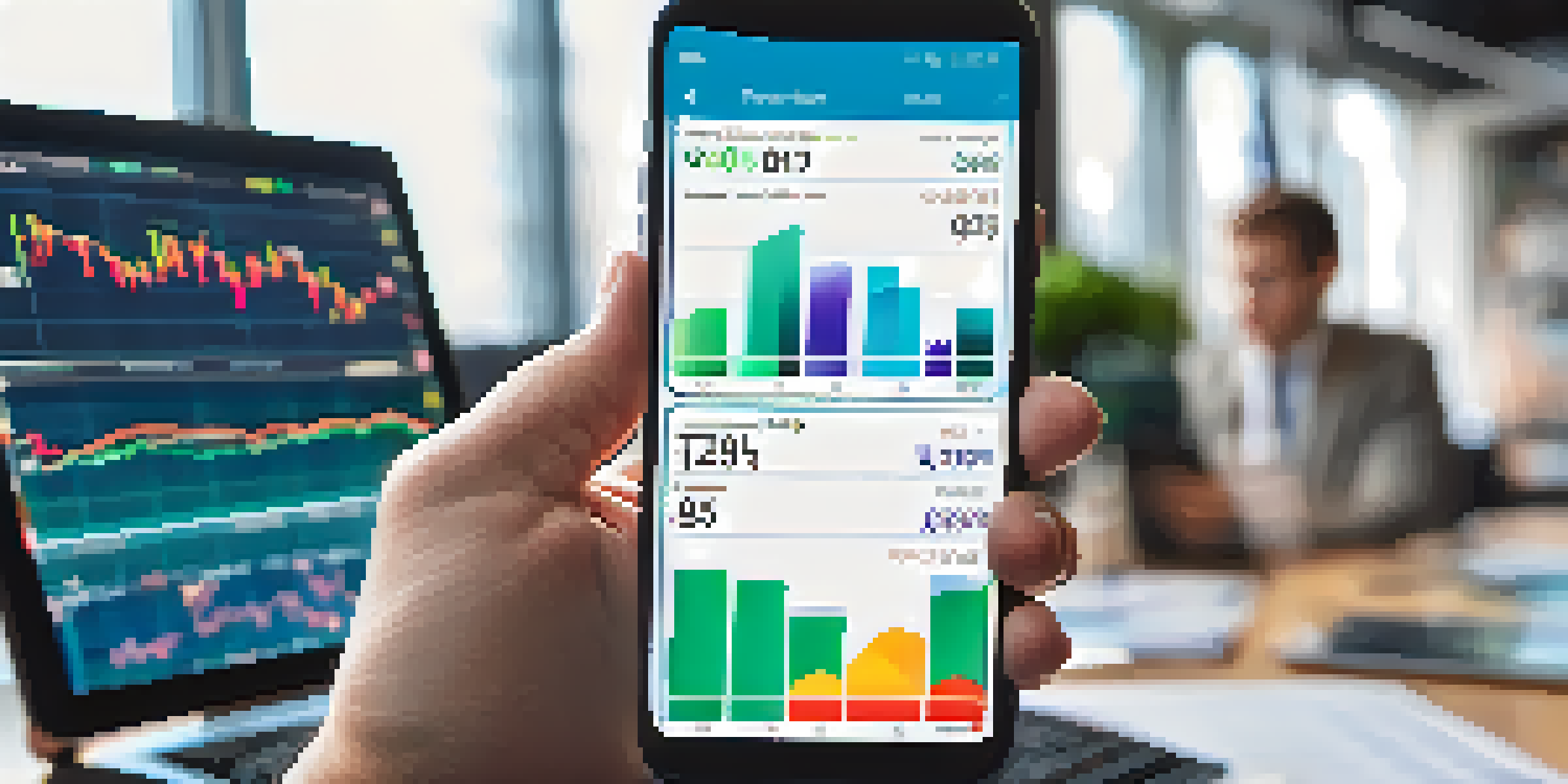How to Use Limit Orders to Control Your Stock Trades

What Are Limit Orders and How Do They Work?
Limit orders are a type of stock order that allows you to specify the maximum price you're willing to pay when buying or the minimum price you're willing to accept when selling. This gives you more control over your trades compared to market orders, which execute at the current market price. By setting a limit, you can avoid the unpredictability of price fluctuations that often occur in fast-moving markets.
In investing, what is comfortable is rarely profitable.
For example, if you want to buy shares of a stock currently trading at $50, you might set a limit order at $48. This means your order will only execute if the stock price drops to that level, helping you save money. Conversely, if you're selling, you might set a limit order at $52 to ensure you get the price you want, rather than selling at a lower market price.
Understanding how limit orders function is essential for any trader looking to optimize their strategy. They offer a safety net, allowing you to make more informed decisions without the pressure of market volatility.
The Advantages of Using Limit Orders
One of the biggest advantages of limit orders is the ability to control your entry and exit points, which can lead to better overall results. By using a limit order, you can avoid getting caught in price spikes or drops that often happen when trading stocks. This level of control can help you stay disciplined, even when emotions run high during trading sessions.

Another benefit is the potential for improved cost savings. Imagine you set a limit order to buy shares of a company at a lower price that you believe reflects its true value. If the market hits that price, you buy the shares without overpaying. This strategic approach can enhance your long-term returns and reduce the chances of impulsive trading decisions.
Control Your Trade Prices
Limit orders allow traders to specify the exact prices at which they are willing to buy or sell stocks, providing greater control over trade execution.
Finally, limit orders can help you manage your risk more effectively. By defining your buy and sell points in advance, you can avoid the common pitfall of panic selling during market downturns, ensuring you stick to your trading plan.
When to Use Limit Orders
Limit orders are particularly useful in situations where you anticipate volatility, such as earnings reports or major news announcements. For instance, if you’re interested in a stock that you believe might drop after bad news, setting a limit order can help you take advantage of that dip without emotional trading. This proactive approach gives you the peace of mind to wait for the right price.
The stock market is filled with individuals who know the price of everything, but the value of nothing.
Additionally, limit orders are ideal for less liquid stocks that may not trade frequently. In these cases, a market order could lead to unfavorable pricing due to the lack of buyers or sellers at the moment. By using a limit order, you're more likely to buy or sell at a price that reflects the stock's true worth.
Ultimately, knowing when to use limit orders can be a game changer in your trading strategy. By identifying the right moments and conditions, you can make smarter trades that align with your financial goals.
Setting Effective Limit Prices
Determining the right limit price is crucial for the success of your orders. It's essential to analyze the stock's historical price movements and current trends to set a price that reflects its potential movement. Using technical analysis tools, such as support and resistance levels, can provide valuable insights into where to place your limit orders.
For example, if a stock has bounced back from a particular price point multiple times, that could indicate a strong support level. Setting your limit order slightly above this level when buying can increase the chances of execution. Similarly, if you're selling, placing your limit order just below a resistance level may help you lock in profits before a potential price decline.
Manage Trading Risks Effectively
By setting predefined buy and sell points, limit orders help traders avoid impulsive decisions and manage risks during market fluctuations.
By taking the time to set effective limit prices, you can enhance your trading strategy and increase your likelihood of success. It’s all about striking the right balance between being aggressive and patient.
Common Mistakes to Avoid with Limit Orders
One common mistake traders make with limit orders is setting their prices too far from the current market price. This can lead to missed opportunities and frustration when the stock doesn’t reach your desired price. It’s important to stay realistic and adjust your limit orders based on market conditions to increase the chances of execution.
Another pitfall is failing to monitor your limit orders. Market conditions can change rapidly, and what seemed like a good limit price yesterday may not be relevant today. Regularly reviewing your orders and adjusting them as necessary ensures that you're not left hanging when the market moves.
Lastly, avoid placing limit orders in a highly volatile market without a clear strategy. While limit orders can protect you from sudden price swings, they can also leave you waiting for an ideal price that may never come. Having a solid plan in place will help you execute trades more effectively.
Combining Limit Orders with Other Strategies
Limit orders can be a powerful tool when combined with other trading strategies, such as dollar-cost averaging. This approach involves buying a fixed dollar amount of a stock at regular intervals, which can reduce the impact of volatility. By using limit orders within this framework, you can ensure that you’re purchasing shares at your desired price over time.
Additionally, consider using limit orders in tandem with stop-loss orders, which automatically sell your stock when it reaches a certain price. This combination allows you to protect your investments while still taking advantage of favorable market conditions with limit orders.
Enhance Trading Strategies
Combining limit orders with other strategies, like dollar-cost averaging and stop-loss orders, can lead to a more comprehensive and effective trading plan.
By integrating limit orders with various strategies, you can create a more comprehensive trading plan. This holistic approach helps to ensure that you are not just reacting to the market but actively managing your investments.
Final Thoughts on Limit Orders
In conclusion, limit orders are a valuable tool for traders looking to take control of their stock trades. They provide the flexibility to set specific entry and exit points, which can lead to better decision-making and improved outcomes. As the saying goes, 'A goal without a plan is just a wish,' and limit orders help you create a plan for your trades.
Remember, the key to successful trading is not just about making profits but also about managing risk and staying disciplined. By using limit orders, you can navigate the stock market with greater confidence and clarity, ensuring that your trading strategy aligns with your financial goals.

So, whether you're a seasoned trader or just starting, incorporating limit orders into your trading toolkit can enhance your overall experience. Take the time to understand their benefits and how to use them effectively, and you'll be well on your way to mastering your stock trades.